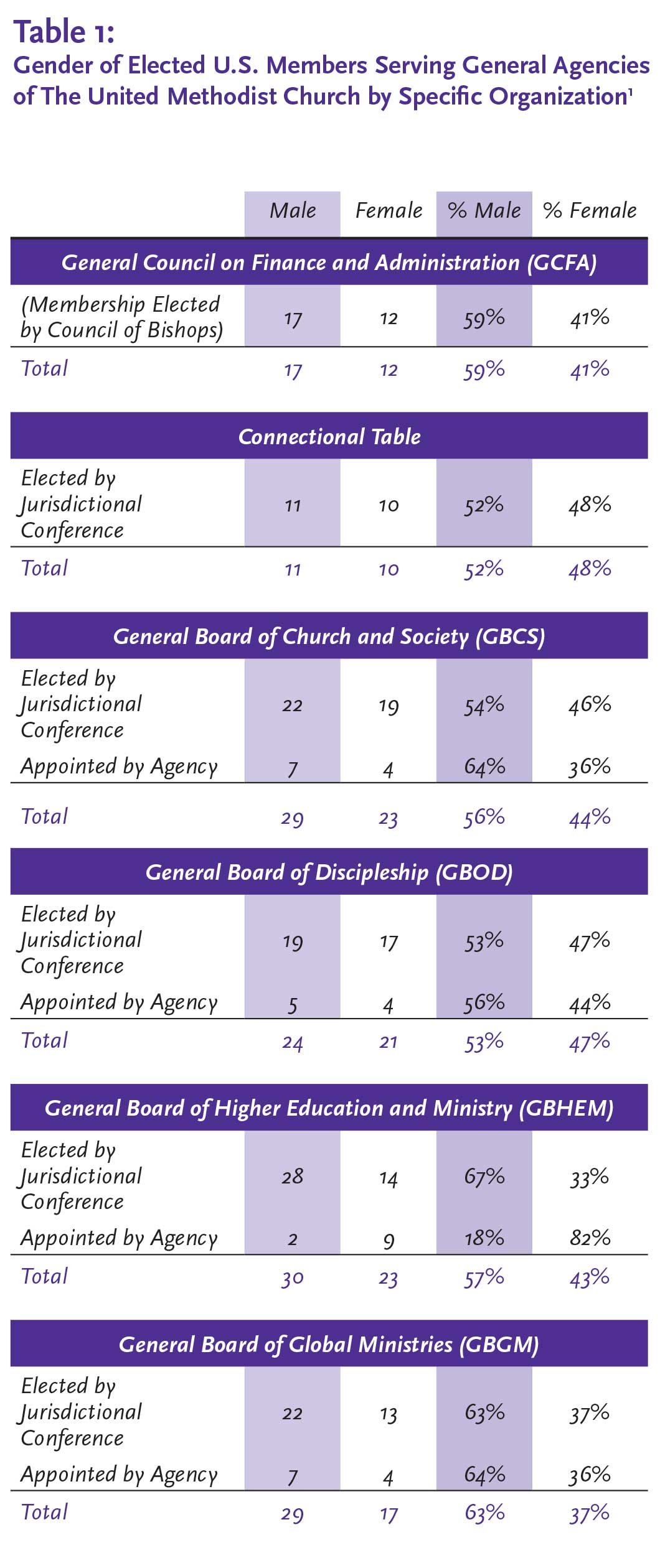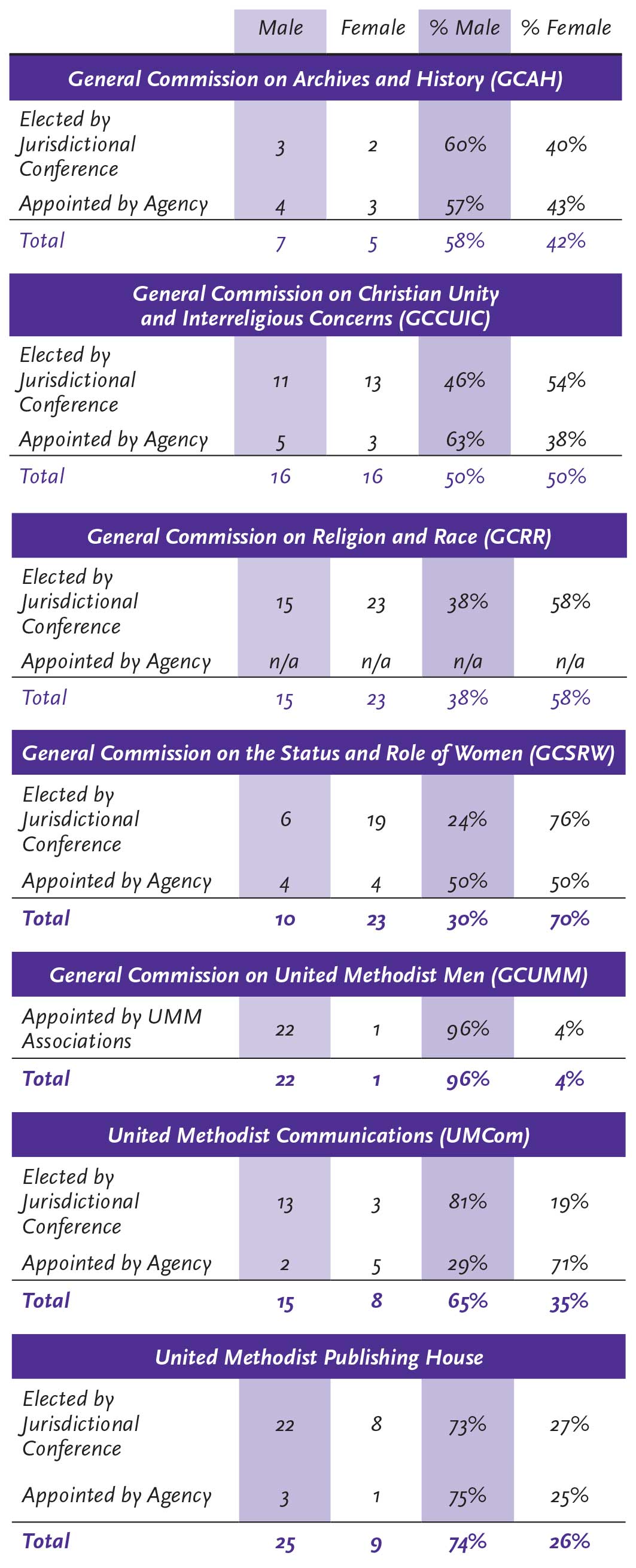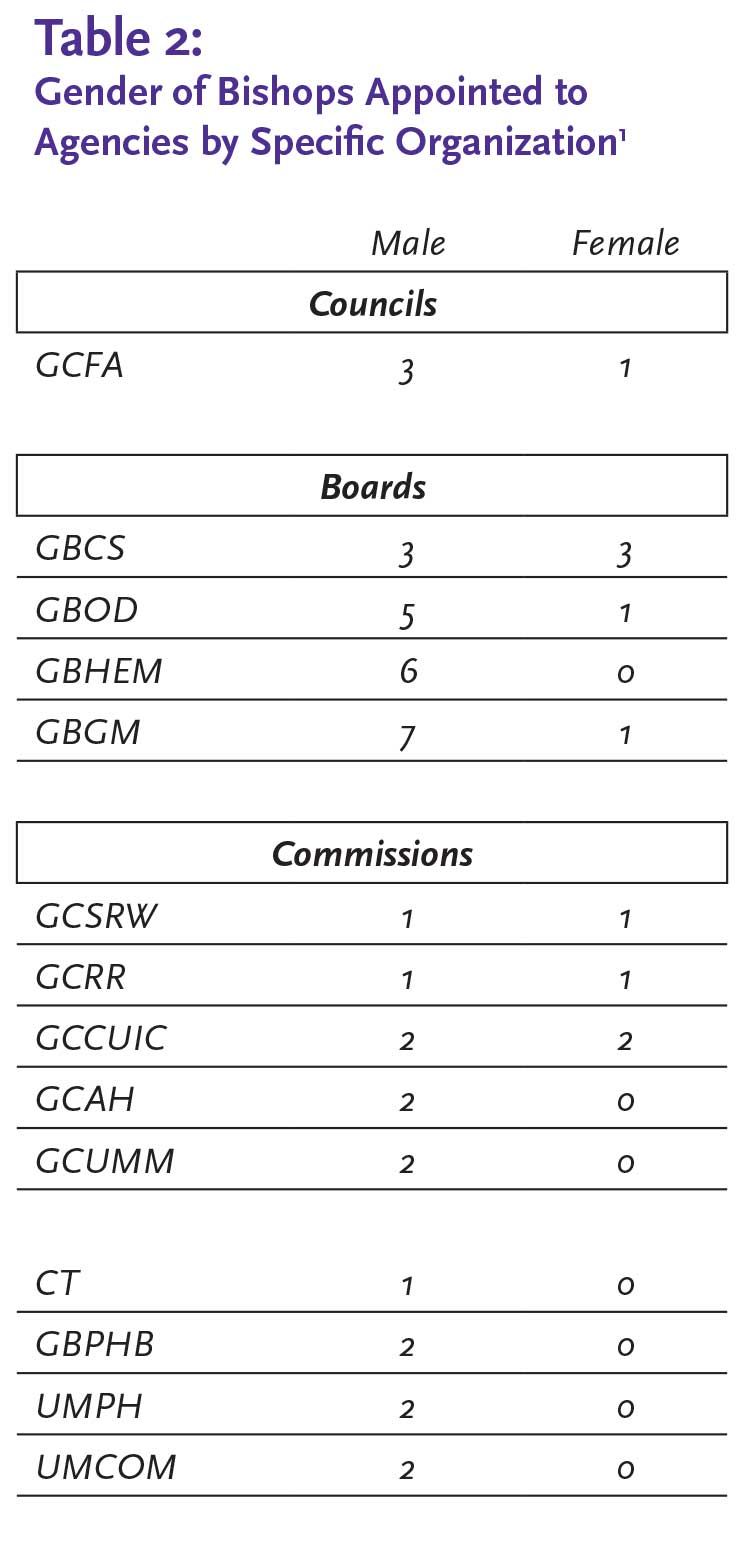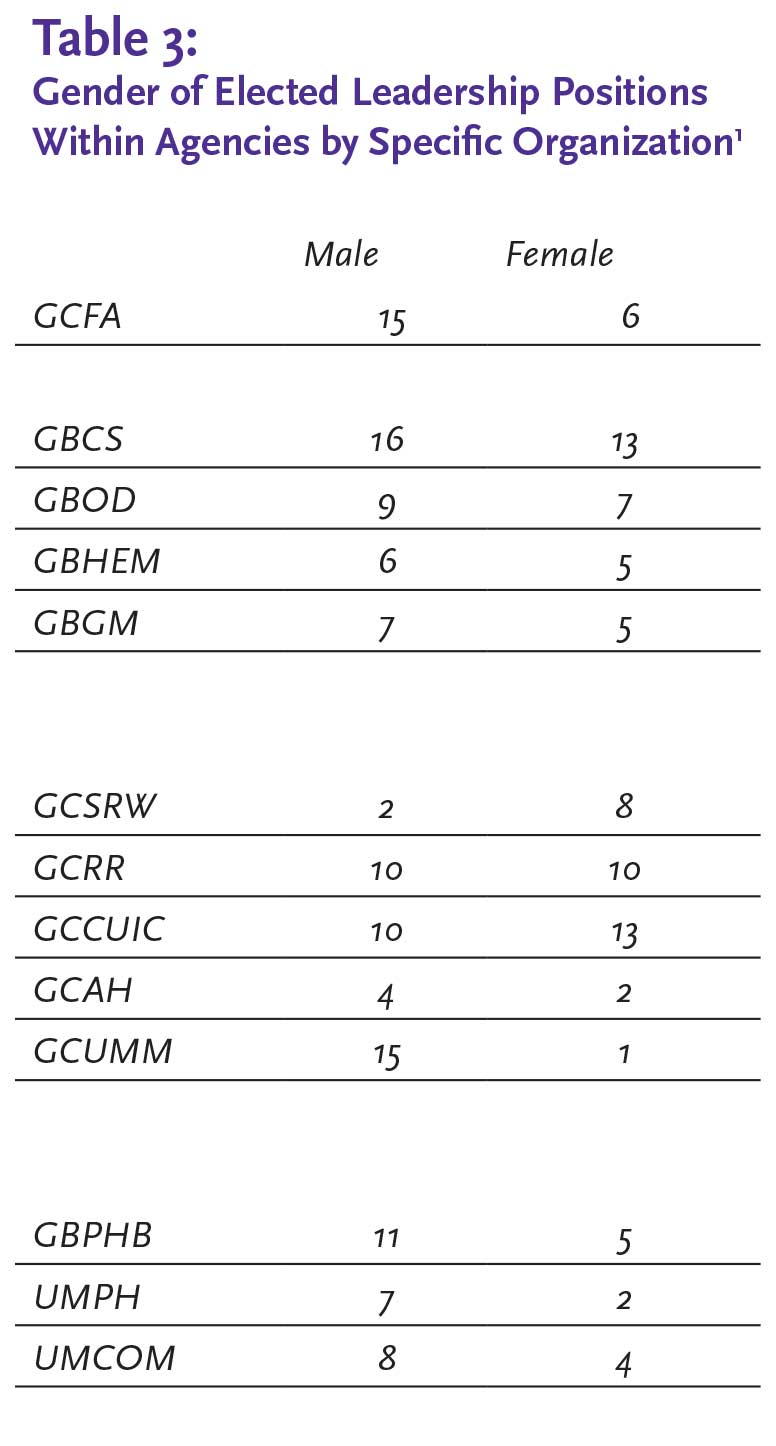By Craig this
Women, whether lay or clergy, bump into a glass ceiling in their attempts to serve as voting members of the various boards and commissions of The United Methodist Church, according to 2006 Council, Board or Commission Annual Members Profile jointly conducted by the General Commission on Religion and Race (GCRR) and the General Commission on the Status and Role of Women (GCSRW).
With the exceptions of the General Commission on Christian Unity and Interreligious Concerns (GCCUIC), General Commission on Religion and Race (GCRR), and the General Commission on the Status and Role of Women (GCSRW), women do not serve in equal numbers to their male counterparts (see Table 1).1
Prior to the start of each new quadrennium, men and women, both lay and clergy, are elected from their Jurisdictional Conferences to serve on the various boards and commissions of the church. The boards and commissions appoint additional members. The Central Conferences and various other constituencies also elect voting and nonvoting members to the boards and commissions. (The 2006 Book of Discipline, ¶705 recommends that the make-up of each boards and agencies, such as one-third clergy, one-third laymen, and one-third laywomen.) Service on boards and commissions is crucial, as it is the members of these boards and commissions who will help implement, shape, and guide legislation passed by General Conference.
Glass ceiling for service on boards
Men are clearly in the majority in serving as members on the four general program boards of the church—General Board of Global Ministries (GBGM), General Board of Discipleship (GBOD), General Board of Higher Education and Ministry (GBHEM), and General Board of Church and Society (GBCS).2 The percentage of men elected or appointed from the Jurisdictional Conferences ranges from 63% for GBGM to 53% for GBOD. When the percentages of men and women appointed by the agencies are included, it is noted that an agency like GBHEM does appoint more women than men; however, it is not enough to overcome the initial election by Jurisdictional Conference.
Further hindering the female voice on the boards is the lack of representation for female bishops. The General Board of Church and Society (GBCS) has an even 3-3 split, but both GBGM (7 male; 4 female) and GBOD (5 male; 1 female) have more male bishops than female while GBHEM has 6 male bishops and no female bishops (see Table 2). GBHEM has as part of its responsibility the standards for ordained ministry.


Glass ceiling at commissions
The general commissions tend to have a better representation of women and men serving as members. While some may argue that this tends to even things out between the boards and agencies, in terms of membership, it does not. The boards have larger budgets, broader oversight, and significantly wider-ranging responsibilities than the commissions. The commissions are mandated by the church to advocate for racial and gender inclusiveness and provide our representation in interfaith and ecumenical relationships.
Nevertheless, it is worth noting that the three commissions that have an equal number of women and men serving or a greater number of women serving than men all are commissions focused on inclusivity, diversity, and equality of representation.
While women do have better representation on some agencies, they lack in representation on the two agencies charged with communicating with the world about The United Methodist Church—United Methodist Communications (UMCom)—and publishing educational material for the church—United Methodist Publishing House (UMPH). Neither of these commissions have female bishops in their membership.
 Source: 2006 Council, Board or Commission Annual
Members Profile, General Commission on Religion
and Race and General Commission on the Status and
Role of Women
Source: 2006 Council, Board or Commission Annual
Members Profile, General Commission on Religion
and Race and General Commission on the Status and
Role of Women
Are the commissions “feminine” and the boards “masculine”?
A recent United Methodist News Service article asked, “Is Church Too Feminine for Men?” (July 19, 2006). The article commented that The United Methodist Church is “‘feminized to a degree’ because a disproportionate number of women are present as the power players.’” While the article examined several factors as influencing the “feminization” of the church, one key factor repeatedly highlighted was the number of women members in the church today.
From the standpoint of numbers, then, yes the commissions are feminine and the boards are masculine. It can also be concluded, based on the numbers, that men get elected to boards and women get elected to commissions. This dichotomy, however, is not based on male or female gender differences. The question is (based on budgets and responsibilities) are tasks having to do with money management and agenda setting in the church “men’s work”? Is it “women’s work” when the subject is relationship building, anti-bias concerns and budgets are significantly less?
Further, if a disproportionate number of women were present as the power players, as the article states, then it would be expected that women would have equal or greater representation on the boards as well as the commissions. The article seems to imply that women, through these power players, are able to leverage greater representation in the church. This is not the case.
Not only were women underrepresented as board members in the 2005–2008 quadrennium, women are less likely to be elected as leaders (see Table 3). Women are not able to overcome the bias and culture that tends to elect men to serve on the boards and men to serve in leadership positions, whether on a board or commission.
 Source: 2006 Council, Board or Commission
Annual Members Profile, General Commission on
Religion and Race and General Commission on the
Status and Role of Women
Source: 2006 Council, Board or Commission
Annual Members Profile, General Commission on
Religion and Race and General Commission on the
Status and Role of Women
Conclusion
Since the representation on the boards and commissions is largely based on electing people from the Jurisdictional Conferences, then women must work hard to get elected at Jurisdictional Conference. However, women are more likely to be elected to agency membership at Jurisdictional Conferences, if they get elected as Jurisdictional Conference delegates.
To do all of the above, jurisdictions must work to elect women—and more women than in the past—as jurisdictional delegates. It is only through this process that women can and will be elected to serve on both boards and agencies. And it is only through this process that women can ensure that the church will continue to value inclusivity, diversity, and equality
1
The General Council on Finance and Administration,
the General Commission on Archives
and History, and the General Commission
on United Methodist Men each have unique
methods for selecting their voting members
and for this reason all three are not included
in the analysis presented here. However, their
memberships are included in the tables for
informational purposes only.
2 Please note the data examined in this article looks at individuals elected from the U.S. jurisdictional conferences and appointed by the agencies themselves. Individuals elected by their Central Conferences or appointed by the agencies from the Central Conferences are not included in these data. Further, individuals appointed or elected from special groups, such as Women’s Division, are not included. These data look solely at the jurisdictional conferences and their impact on agency membership.
Craig This is a faculty member of the Department of Sociology, Geography, and Social Work at Sinclair Community College.
